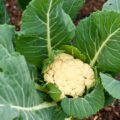Spinach is a Superfood
Spinach is a healthy food packed with nutrients and vitamins that can benefit your body in many ways. Here are some of the top health benefits of spinach and how to incorporate it into your diet regularly.
Origins
Spinach was known as one of man’s first cultivated plants. It has been around for thousands of years, and there are many different varieties of spinach. Spinach can be eaten raw in salads or sandwiches, used as an ingredient in soups, stews, omelets, and more! It also makes a great addition to homemade baby food. There are tons of different ways to eat spinach and it doesn’t have to be cooked at all to reap its benefits. If you don’t like spinach straight out of a salad then try adding raisins and poppy seeds for a sweet treat that doubles as good for your dinner!

Health Benefits
If you’re not eating your leafy greens, you’re missing out on some incredible health benefits. Dark, leafy greens are often called superfoods because they’re packed with so many important nutrients. They contain high levels of vitamins A and C and are rich in calcium, iron, folate, magnesium, potassium, and zinc—all of which help keep our bodies healthy in various ways. But dark green veggies also have antioxidants that can fend off illness and protect against cancer.
Spinach, kale, chard, and collard greens all contain carotenoids (beta-carotene) that are powerful anti-cancer nutrients. Spinach also contains anthocyanins (also found in blueberries), flavonoids, lutein/zeaxanthin, and saponins – each providing it with its array of additional health benefits. Antioxidants aren’t just for your internal organs—they can benefit the skin as well by protecting it from sun damage. And finally: Iron is especially crucial for pregnant women and those who may be anemic. Popeye was onto something when he recommended spinach to his girlfriend!
Vitamins and Minerals
Spinach, like other leafy greens, contains more nutrients per calorie than almost any other food. One cup of spinach has 40 calories and 5 grams of protein. That’s more than 4 times as much iron as you’ll find in an 8-ounce glass of milk (and most other foods). Spinach also has calcium and potassium, which are important for bones and blood pressure. Greens are packed with vitamins A, C, K, folate, and many B vitamins; along with calcium; phosphorous; iron; magnesium; zinc; manganese, and selenium. All of these nutrients play important roles in every system in your body—skin health included!

Nutritional Value
Spinach is incredibly low in calories and has very few carbohydrates, fat, or protein. One cup of raw spinach provides just 33 calories. It’s not surprising that spinach leaves are filled with tons of minerals and vitamins: they have over twice as much Vitamin A as an orange and almost as much iron as a steak. They’re also full of vitamin C, riboflavin, thiamine, and folate. All these nutrients contribute to strong skin, hair, eyesight, muscle tone, and more!
Caring for spinach
Make sure to rinse your spinach thoroughly before you eat it. All those fine, little dirt particles can cling to those leaves and make them less flavorful (and less healthy). Thoroughly drying your spinach will also help prevent it from going bad. Once you’ve rinsed and dried it, stick your spinach in a plastic bag or container with an airtight lid. It will keep fresh longer that way. If you plan on using all of your spinach immediately after purchasing it, store it in its original packaging in your refrigerator’s crisper drawer.

Recipes with spinach
Spinach can be mixed into smoothies and juices, or cooked in stir-fries, pasta, and soups. It’s very versatile, so once you’re familiar with it in your favorite recipes, try swapping it for lettuce or kale in new dishes. Chopped spinach makes a great filler for sandwiches and wraps. Add toasted nuts for crunch and flavor.
Other uses for spinach
You can mix spinach with ground beef to make your homemade burgers.
You can put spinach on top of your pizza instead of using plain cheese.
You can eat it raw in salads.
Put some in an omelet or frittata for breakfast.
Spinach makes an excellent soup ingredient. Simply chop up some onions, tomatoes, and garlic and throw them into your slow cooker with chicken broth or water and your favorite spices (it’s also great if you add potatoes). Give it time to cook until everything has softened and melded together 30 minutes should do it—and serve hot.

